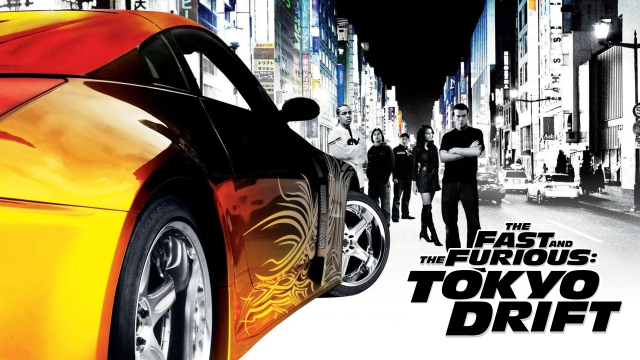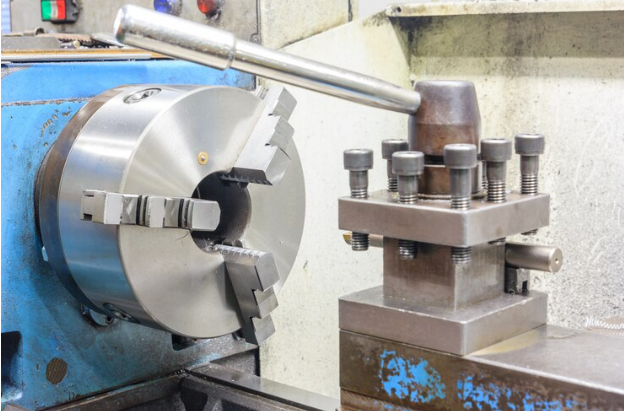The 2006 film The Fast and the Furious: Tokyo Drift is a cinematic milestone that captured the world’s imagination and forever changed the way people view street racing, car culture, and drift racing. While it wasn’t the highest-grossing film in the Fast & Furious franchise, its impact on car culture and the global popularity of drifting cannot be overstated. This article takes a deep dive into the world of Tokyo Drift, exploring its creation, cultural significance, and lasting influence.
The Birth of Tokyo Drift: A New Direction for the Fast & Furious Franchise

Tokyo Drift marked a significant shift in the Fast & Furious series, which had previously focused on street racing in the United States. Directed by Justin Lin, who had already established himself as a director with a keen understanding of youth culture, the movie took the action to Japan and introduced audiences to a completely different style of racing: drifting.
The Transition from Street Racing to Drifting
When The Fast and the Furious first hit theaters in 2001, it was a film about street racing and car culture in Southern California. The film’s success spawned sequels, but by the time it came to make Tokyo Drift, the team needed something fresh and exciting. Street racing had become mainstream, and filmmakers wanted to take the franchise in a new direction. This is where drifting—an obscure motorsport at the time—came into play.
Drifting, which involves intentionally oversteering a car into a controlled skid, was popular in Japan but not widely known in the U.S. At the time, many car enthusiasts in America weren’t familiar with the sport. The decision to center the film around drifting introduced a whole new world to moviegoers and set the stage for a new era of Fast & Furious films that would soon expand to include international locations and a broader variety of action-packed stunts.
A New Lead: Lucas Black and Sean Boswell
Unlike the previous installments of the franchise, which focused on established characters like Paul Walker’s Brian O’Conner and Vin Diesel’s Dominic Toretto, Tokyo Drift introduced a fresh face to the series. Lucas Black played Sean Boswell, a rebellious teenager who finds himself shipped off to Japan after getting into trouble with the law. His journey becomes one of self-discovery and redemption as he becomes immersed in the world of drifting.
While the character of Sean Boswell didn’t receive the same level of attention as Brian O’Conner or Dominic Toretto, Lucas Black’s portrayal resonated with many fans, particularly those who were looking for a new perspective in the franchise. His introduction to the drifting scene in Japan was the perfect way for the movie to explore this unique subculture.
The Influence of Director Justin Lin
Justin Lin, who took the helm as director of Tokyo Drift, played a pivotal role in shaping the movie’s tone and style. A key aspect of Lin’s directorial style is his ability to fuse high-octane action with deep cultural elements, which is exactly what he did with Tokyo Drift. Lin was fascinated by Japan’s underground car culture, and he felt that drifting was the perfect vehicle to introduce this world to global audiences.
In interviews, Lin has discussed how he sought to portray the true essence of drifting, paying homage to the Japanese racing scene without turning it into a caricature. The attention to detail and the authentic portrayal of Tokyo’s car culture were some of the aspects that made the movie stand out from other racing films of its time.
Understanding Drifting: The Art Behind the Speed
At its core, drifting is about maintaining control while pushing the limits of a car’s performance. The movie Tokyo Drift doesn’t just show drifting as a form of racing; it immerses viewers in the strategy, precision, and skill that goes into the sport.
What is Drifting?
Drifting, as a motorsport, involves intentionally oversteering the car into a slide, and maintaining that slide through a series of corners, all while keeping control of the car. It requires precise throttle control, steering, and brake work to keep the car drifting at high speeds without losing control. The driver needs to balance the car’s momentum, weight distribution, and tire traction to maintain a controlled drift.
In Tokyo Drift, the art of drifting is central to the plot. Sean Boswell, after being introduced to the concept by local drifting legend Han, quickly learns that it’s not just about power or speed—it’s about finesse. The car can break traction, slide sideways, and still maintain a high level of control that defines drifting. The movie does an excellent job of showcasing how drifting is both an art and a science.
The Drift Cars of Tokyo Drift
One of the most iconic aspects of Tokyo Drift is the cars featured throughout the film. Every car was handpicked to emphasize the importance of customization in drifting culture. The most notable car is the Nissan Silvia S15 driven by Sean Boswell, a lightweight, rear-wheel-drive car that is perfect for drifting. Han’s car, a Veilside Mazda RX-7, is another standout—its sleek design and powerful rotary engine make it an unforgettable part of the film.
The cars in Tokyo Drift are more than just machines—they are characters in their own right. The way they’re modified, the sounds of their engines, and the way they handle the Tokyo streets become synonymous with the world of drifting. These cars not only represent the technical aspects of the sport but also the personalities of the drivers behind the wheel.
The Drift Culture in Japan
Tokyo Drift does more than just feature drifting as a racing technique; it dives into the cultural significance of drifting in Japan. In the 1980s and 1990s, Japan’s car scene began to develop its unique style of racing—one that was heavily focused on style and technique rather than outright speed. This form of racing became known as drifting. The underground racing scene in Japan was not only about the cars but also about the lifestyle that surrounded them.
In Tokyo Drift, we see how drifting is a way of life for many of the characters. It’s not just a hobby or a sport, but a cultural expression. The film touches on how the Japanese see drifting as a test of skill and a way to express personal freedom and identity. It’s less about winning trophies and more about mastering the art of control and precision behind the wheel.
Tokyo as the Perfect Backdrop
The setting of Tokyo Drift is as much a character in the film as the people and cars. Tokyo, with its neon lights, winding mountain roads, and bustling streets, provides the perfect backdrop for the film’s high-speed action.
The Streets of Tokyo: A Visual Feast
Tokyo is a city of contrasts: a fusion of tradition and cutting-edge technology, old-world charm and modern flair. The film makes excellent use of this contrast, showcasing Tokyo’s narrow streets, towering skyscrapers, and nighttime glow. The vibrant energy of the city is reflected in the drifting scenes, which feel both electric and grounded at the same time. The city’s dense urban sprawl and the iconic Shibuya Crossing give the movie a unique flavor, differentiating it from other racing films set in more typical American locales.
In the film’s most famous scenes, Sean and his fellow drifters race through the streets of Tokyo and up into the mountains, capturing the essence of Japanese car culture. The city becomes a character in its own right, as the characters navigate its complex roads and discover a side of Tokyo that most visitors never see.
The Mountain Roads and Drift Racing
One of the most thrilling aspects of drifting is the technique required to navigate tight, winding mountain roads. The mountain roads around Tokyo have become a symbol of drifting, and the film makes the most of this by setting many of its key scenes in these locations. These mountain passes are narrow, treacherous, and perfect for the kind of drifting that requires incredible precision and control. It’s here that the tension and excitement of the film come to life, as the drivers push themselves and their cars to the limit.
The iconic “drift battle” scene between Sean and DK (Drift King), in particular, takes place on these mountain roads and showcases not only the technical skill required to drift but also the importance of confidence and nerve. The sheer danger and beauty of these roads help convey the thrills of drifting in a way that flat, wide racing tracks never could.
The Influence of Japanese Car Culture
Japanese car culture plays a huge role in shaping the film’s atmosphere. Tokyo is home to some of the world’s most dedicated car enthusiasts, many of whom gather in local parking lots and night races to show off their skills and modified cars. The film captures this underground car culture in a way that’s both authentic and exciting. The filmmakers worked hard to ensure that the customs, the cars, and the personalities felt real, making the movie feel like a snapshot of a unique subculture.
From the street racing meets to the custom car modifications, Tokyo Drift pulls heavily from the reality of Japan’s street racing scene. The film’s attention to detail and accuracy helped bring the world of drifting to life in a way that felt natural and true to the source material.
The Characters and Their Roles in the Drift World
While the cars and the racing are undoubtedly the stars of Tokyo Drift, the characters are what give the movie its emotional depth. The film introduces several key figures who each play a role in shaping Sean Boswell’s journey into the world of drifting.
Sean Boswell: The Reluctant Drifter
At the heart of the story is Sean Boswell, a young man with a troubled past who finds himself in Tokyo after being sent to live with his father. Sean is initially an outsider in the drifting scene, struggling to adapt to the new culture and the skills required to drift. But as the movie progresses, Sean learns the ropes, gaining respect in the drifting community while also discovering more about himself.
What makes Sean such a compelling character is his growth throughout the film. He’s not a natural-born racer; he’s someone who has to learn the hard way. But his determination, coupled with his willingness to take risks, ultimately earns him the respect of those around him. By the end of the film, Sean has become a true drifter, able to hold his own against the best of them.
Han: The Mentor and the Soul of Tokyo Drift
If Sean is the heart of Tokyo Drift, then Han is the soul. Played by Sung Kang, Han is one of the most beloved characters in the entire Fast & Furious franchise. Han is a laid-back, yet highly skilled drifter who takes Sean under his wing. He teaches Sean the importance of staying calm and focused while drifting, and their relationship becomes one of the most important in the film.
Han’s backstory—particularly his mysterious past—adds a layer of depth to the film. Despite his easy-going exterior, Han has a tragic backstory, which makes his eventual fate even more impactful. Han’s mentorship of Sean helps bridge the gap between the traditional Japanese drifting scene and the American street racing culture that Sean comes from. Through Han, Sean learns that drifting is more than just a race—it’s about precision, respect, and finding your place in the world.
DK (Drift King): The Antagonist
In any good racing movie, there’s got to be a rival, and in Tokyo Drift, that rival is DK, or Drift King, played by Brian Tee. DK is the top drifter in Tokyo and the one who stands in Sean’s way. He’s skilled, confident, and ruthless on the streets. DK is also the nephew of a Yakuza boss, which gives him both power and influence in the Tokyo drift scene.
While DK initially seems like a stereotypical villain, there’s a certain complexity to his character. He’s not just a bad guy for the sake of being bad; he’s someone who’s been given everything, including his drift status and feels threatened by Sean’s natural talent. His arrogance and temper make him an ideal antagonist in the film, and his climactic drift battle with Sean is one of the most intense moments in Tokyo Drift.
The Legacy of Tokyo Drift and Its Lasting Impact
Although Tokyo Drift wasn’t the highest-grossing film in the Fast & Furious franchise, its influence on the car culture and drifting community is undeniable. The film introduced drifting to a global audience and, in many ways, helped to popularize the sport outside of Japan.
Popularizing Drifting Worldwide
Before Tokyo Drift, drifting was largely unknown outside of Japan. However, the film played a crucial role in spreading the sport’s popularity to the West. After the movie’s release, drifting events and competitions began to grow in popularity in countries like the United States, the United Kingdom, and Australia. The film gave a whole new generation of car enthusiasts a reason to explore drifting, leading to the growth of professional drifting leagues and the rise of drift culture worldwide.
The Cultural Significance of Tokyo Drift
Beyond the sport of drifting itself, Tokyo Drift had a cultural impact. The film brought Japanese car culture to the forefront, introducing audiences to the unique modifications and styles that are central to the drifting world. From the sleek body kits to the custom engines, the cars in Tokyo Drift set a new standard for automotive design in the movies.
The movie also highlighted the role of the car in modern youth culture. For many fans, the cars weren’t just vehicles—they were symbols of freedom, rebellion, and self-expression. The drifting scene, with its focus on precision and individuality, mirrored the struggles and aspirations of the characters in the film, making Tokyo Drift resonate with a young audience looking for something new and exciting.
The Impact on the Fast & Furious Franchise
In terms of the Fast & Furious franchise, Tokyo Drift helped to shape the direction of future films. The movie was pivotal in expanding the universe beyond American street racing, showing that the franchise could take on global themes and settings. The introduction of characters like Han and the exploration of international car cultures added a new layer to the series, setting the stage for future installments that would blend high-speed action with heart-pounding stunts and diverse locations.
Conclusion: The Enduring Appeal of Tokyo Drift
In the years since its release, Tokyo Drift has only grown in stature. It’s now considered a cult classic by many car enthusiasts, and its influence on both the Fast & Furious series and the broader car culture is undeniable. The film introduced a new way of thinking about street racing, shifting the focus from raw speed to skill, style, and precision. Through its unforgettable cars, memorable characters, and thrilling action, Tokyo Drift secured its place in cinematic history and continues to inspire new generations of car lovers around the world.
Whether you’re a lifelong fan of the franchise or a newcomer to the world of drifting, Tokyo Drift remains a film that will continue to rev its engines and burn rubber for years to come.




